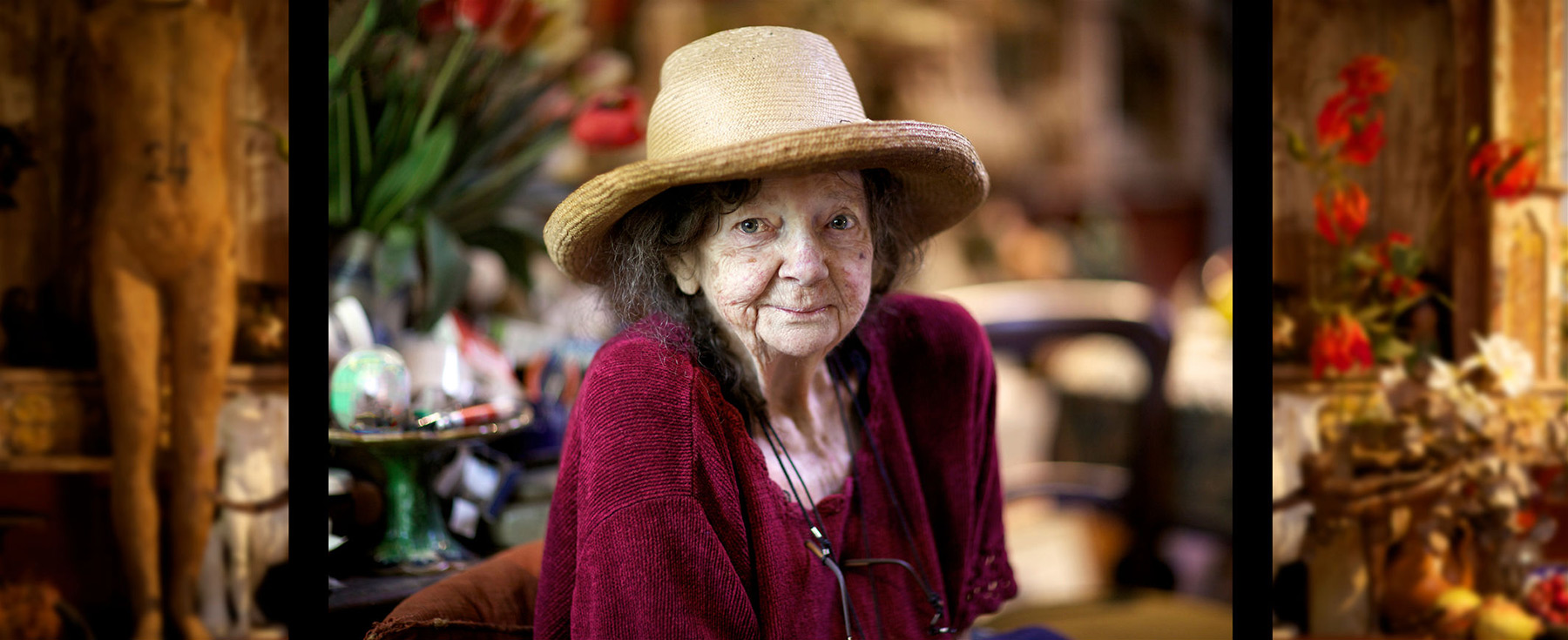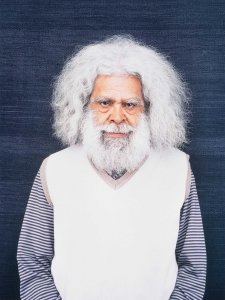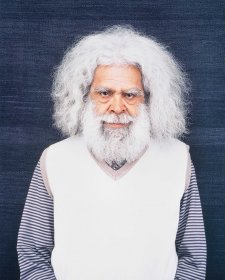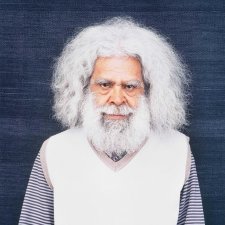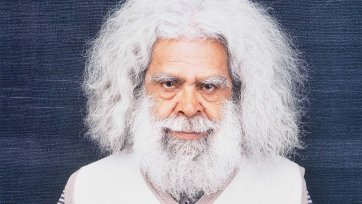I had the great pleasure of photographing Margaret in her Paddington studio, a place well known for its colourful clutter and referred to by some friends as 'The Dolls House'. In my portrait, Margaret is seated in her painting chair, confronting the lens with her particular sense of candour and an uncommon frailty. As far as I know, this may well be the last photo taken of her before her death the following month. Christine France - art critic, author of Margaret Olley (1990), commented, "It is a wonderful photo in that it captures both the vulnerability and sense of enquiry which entered her face in the last months of her life".
Questions
1. What do you first notice when you look at this portrait of Margaret Olley? Why?
2. Margaret Olley (1923-2011) was a well-known Australian artist. What does this studio portrait tell you about Olley as an artist?
3. McRae created his portrait of Olley as a triptych. How does this presentation of the image influence your reading of the subject?
The photographer and the portrait -
an interview
How do you define your own practice?
Photographer.
Do you have a website or are you represented on a website?
I have two web addresses - one for my commercial work and another for my art projects for exhibition: johnmcrae.com projects.johnmcrae.com
What is your relationship to the subject?
I was an acquaintance of Margaret and a great admirer of her long and rich career. I had begun to photograph her work for the exhibition she was working on before she died. In fact, I produced a giclee print of one of her images for commercial release through her print gallery, Berkeley Editions. So it was through my work as a photographer and printer that I had the immense pleasure of meeting this noble lady.
Was the photograph a result of a constructed or candid encounter?
I would have to say the photograph was pretty much a candid encounter. I was visiting Margaret to deliver back one of the paintings I had photographed. I bought my camera with me as I thought I would like to get a couple of shots of the fabulous interior of Margaret's studio. So I asked Margaret if I could take a few shots while I was there. In the process of capturing the interior I thought it would be silly not to ask her if I could also get a portrait shot. Margaret, of course, agreed and I shot only a few frames just at the end of my stay. That was all that was required. I got the shot in the first instance.
What are the ideas or themes underpinning your portrait?
The main theme of this portrait is the sitter's relationship to her surroundings. That is why I included the vignettes of the surrounding studio as a triptych. Margaret's studio was a colourful, magical universe which reflected her own joy and love of humanity. She told me that friends referred to her studio as "The Doll's House", a telling statement that affirms the fact that she never lost contact with the child within. It is also a powerful statement from a gentle soul in the last few weeks of her life.
Describe the technical aspects of your photograph?
I used a Canon 5D Mark II DSLR to capture this image. I used available light. The key light is the available light, filtering through a large window, near where she would spend her days painting, behind and to the left side of the photographer. The rest of the studio was lit similarly by available light from window sources on either side of the room. These light sources helped to fill in some of the shadows on the sitter. Apart from a contrast and colour balance adjustment, no other digital processes were performed on the photographs, other than to place the three photographs into one file. I wanted to keep the shot as natural and as raw as possible.
How was the final print made?
The final print is a pigment based inkjet print (giclee print) on Hahnemuhle cotton rag paper. It is an artist proof and there is no edition of the work at this stage. Describe your consideration of scale, mounting and framing in the presentation of your portrait? It is my preference to work larger than smaller with my photographic prints as a rule and this print is no exception. I chose a simple box frame so as not to compete with the work itself. I decided to format the three images together into one work with a relatively large black border. I felt this was more practical and perhaps has more impact than to frame the photographs separately and hang them as three distinct works, plus it cements Margaret in the context of her studio.
Who would you nominate as your influences?
Well I'm a big fan of Annie Leibovitz for a start. Other influences on my work are Joel Peter Witkin, Guy Bourdin, Cindy Sherman, Helmut Newton, Cartier Bresson, Robert Mapplethorpe, and the painter Francis Bacon, to mention a few.
Do you have any advice for a beginning photographer (eg. students)?
The only advice I would have is simply to follow your passion, let it lead you, and don't give up - keep going, even if it hurts!
